Quick links can be used to hold your chain together, making your life a whole lot easier when it comes to maintenance, cleaning or getting you home should your chain break out on a ride.
In this guide, we’ll take a look at what a quick link is, the question of whether you can reuse them and compatibility, as well as walking you through a guide on how to remove and install them.
What is a quick link?

A quick link replaces a chain link with a pair of interlocking plates with in-built pins that can be installed or removed without a chain breaker. This allows a chain to be easily removed, for example if you’re going to thoroughly clean your chain off the bike or if you’re replacing your chain.
Quick links are sometimes known as a connecting pin, missing link, master link, power link or spare link. But, regardless of name, they all have the same function.
It is well worth carrying a quick link when you’re riding, perhaps in a saddlebag, just in case you’re unlucky enough to break your chain.
Can you use a quick link more than once?
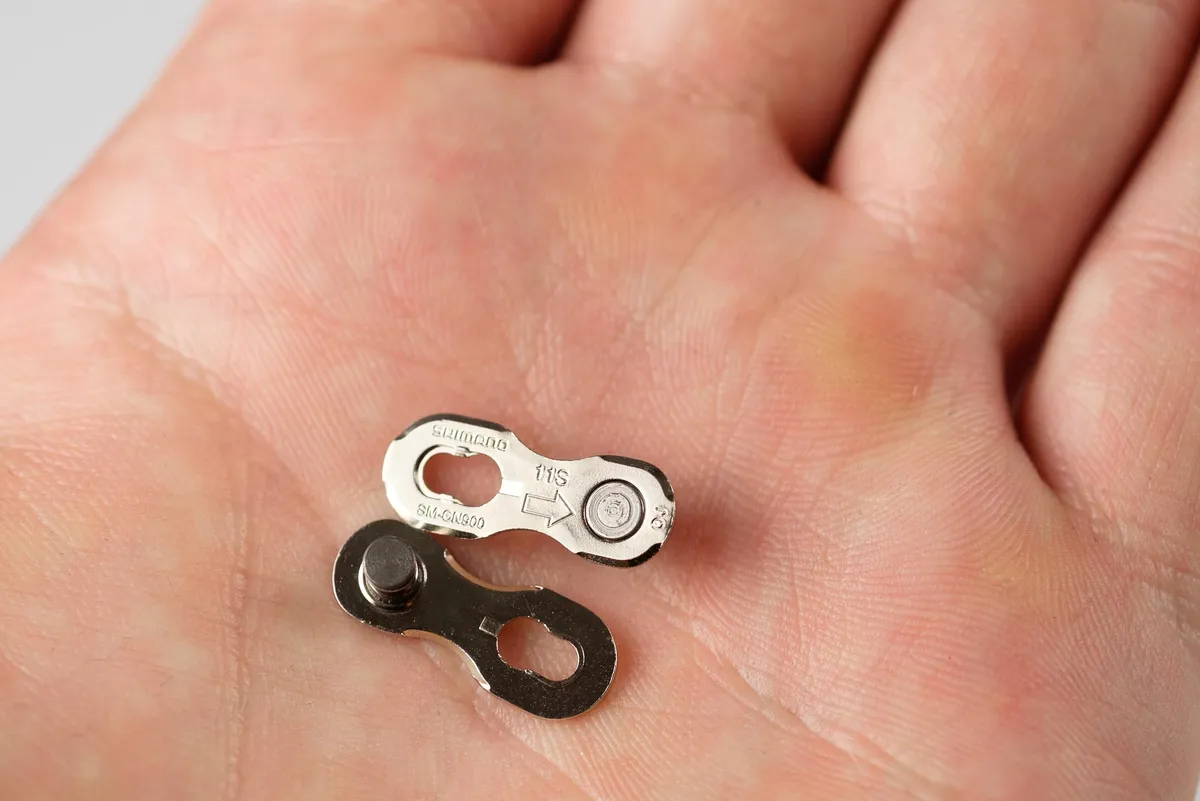
Quick links can’t be used more than once, although there are some exceptions. This is because a quick link is weaker when reused and there is a greater possibility of it snapping – which is the last thing you’d want to experience out on a ride.
Many non-reusable quick-links require quite a lot of force to install and if you reuse one, you’ll notice that less force is required to lock the quick link into place.
Some riders and mechanics reuse quick links without issue, although you should consider the risks. If you're going to reuse a link, bear in mind the force it takes to remove or install the quick link compared to how it was originally and replace it if it’s significantly looser.
Shimano and Campagnolo don’t manufacture reusable quick links.
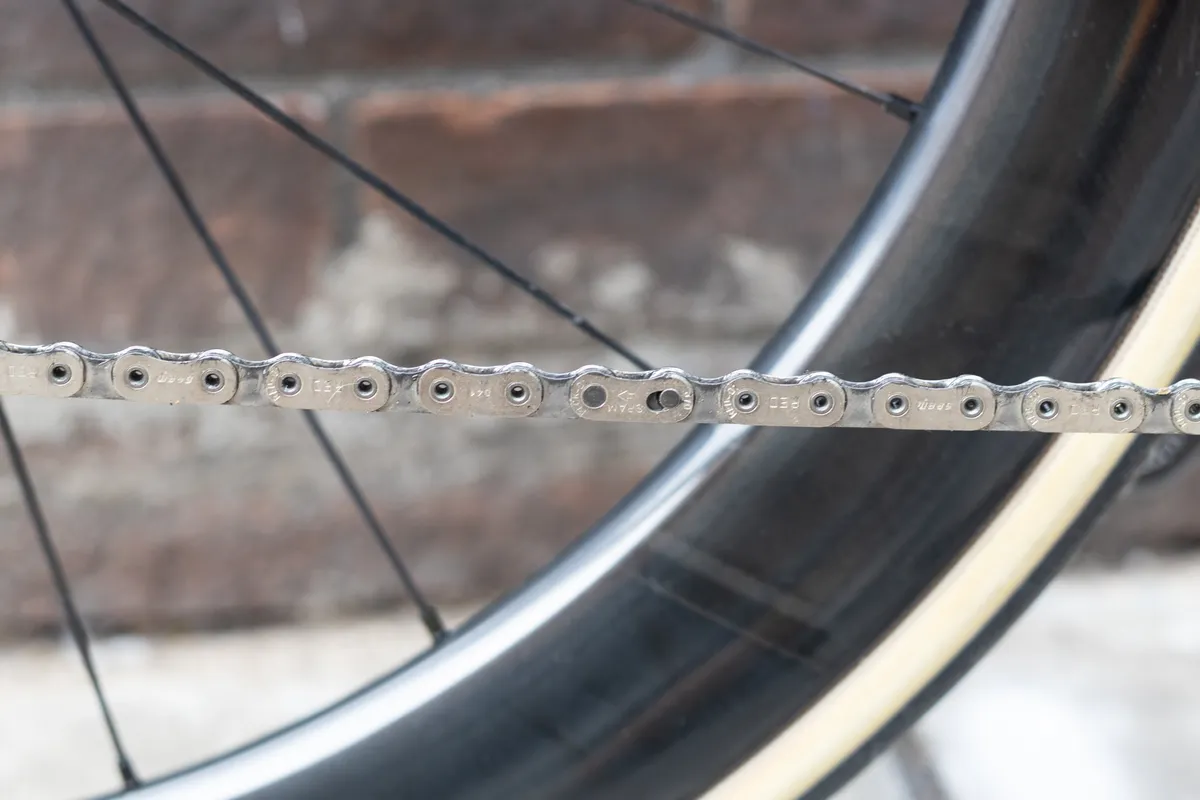
SRAM’s 8- and 9-speed PowerLinks can be reused, but its 10-, 11- and 12-speed PowerLocks are non-reusable. SRAM says the ridge that joins the two plates of the PowerLock together can be damaged when unlocking it.
KMC, an after-market brand, offers both reusable and non-reusable ‘Missing Links’ in its range. The quick links are manufacturer and speed-specific, so make sure you get the right one for your drivetrain.
YBN’s reusable quick links are said to be good for up to five uses.
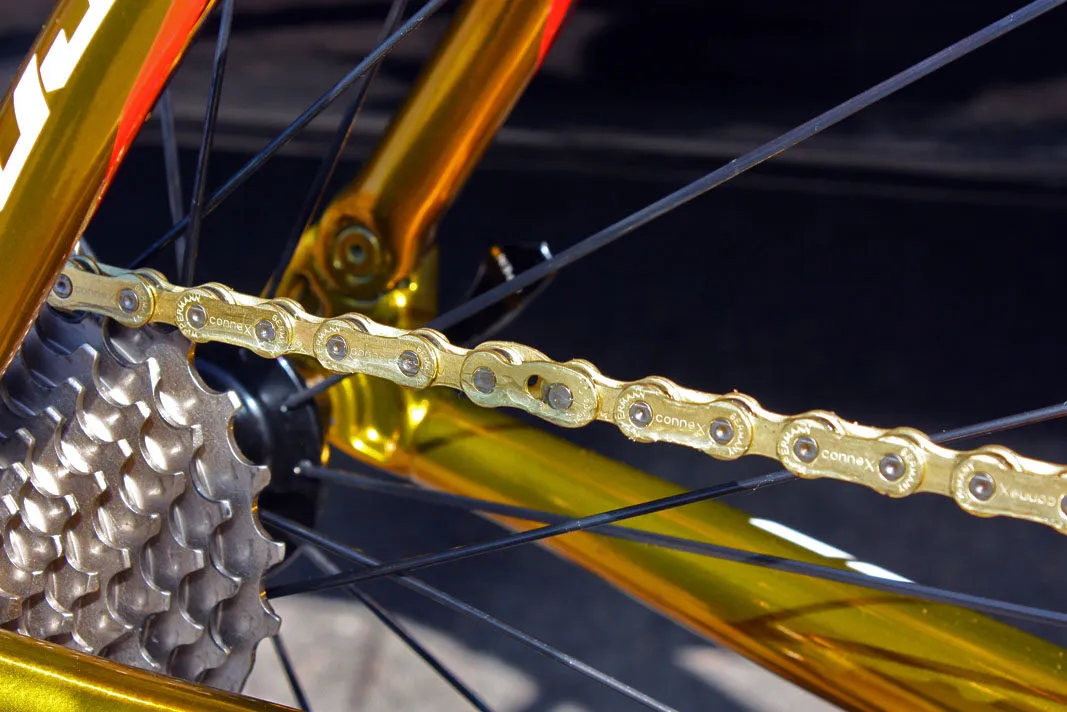
Wippermann’s Connex quick link uses a different hooked design rather than a locking fit. Wippermann says its quick link can be reused many times, in addition to being removed and installed without tools.
Many of KMC, YBN and Wippermann’s quick links are compatible with groupsets from the Big Three.
Quick link compatibility
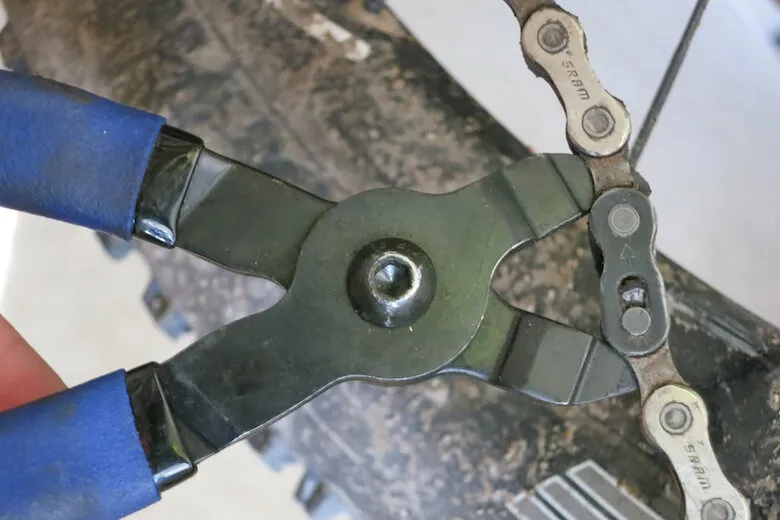
SRAM was the first big groupset brand to release a quick link, when it released the PowerLink on its 8- and 9-speed systems and PowerLock on its 10-speed system.
Shimano and Campagnolo steadfastly stuck to joining pins for their chains.
Shimano took a long time to bring out a quick link, but it finally released one in June 2017.
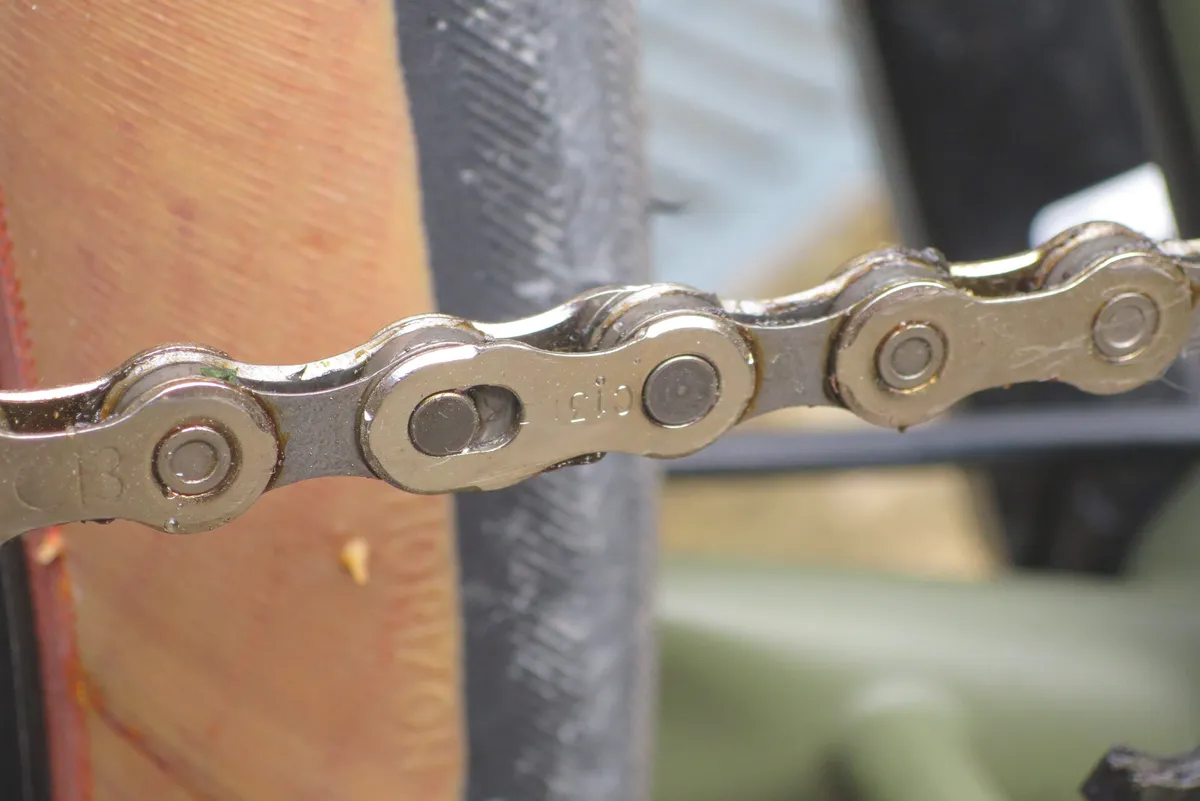
Campagnolo waited three more years, releasing its first quick link in September 2022.
Called the C-Link, Campagnolo's quick link was designed to work with its new 13-speed Ekar groupset. This is still the only quick link in Campagnolo's range: it has not brought out quick links for its 11- and 12-speed groupsets, nor for any of its legacy products
How to install a quick link
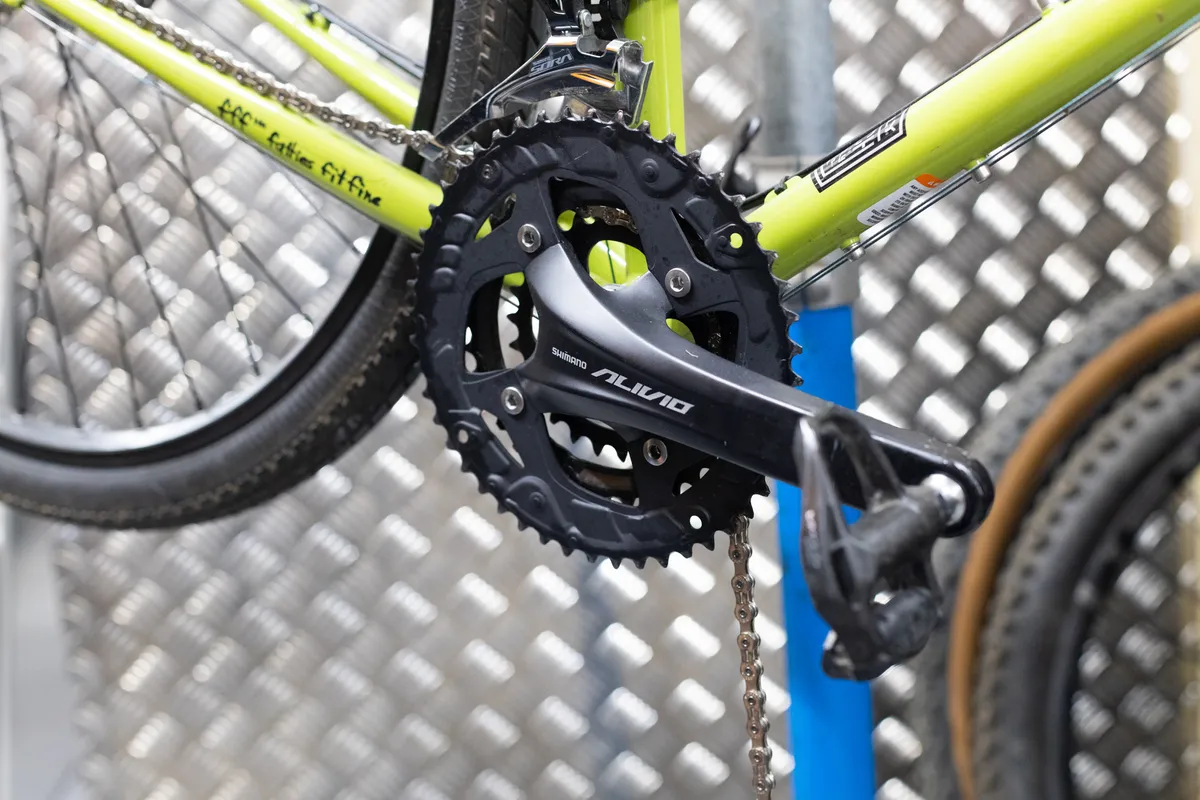
If you’re installing a new chain from scratch, cut the chain to the correct length (bearing in mind you’ll need to add a quick link). Both ends of the chain will need to be open inner links. You can cut the chain to length using one of the best chain tools.
If you're adding a quick link to a broken chain by the side of the road, you won't need to worry about this first step.
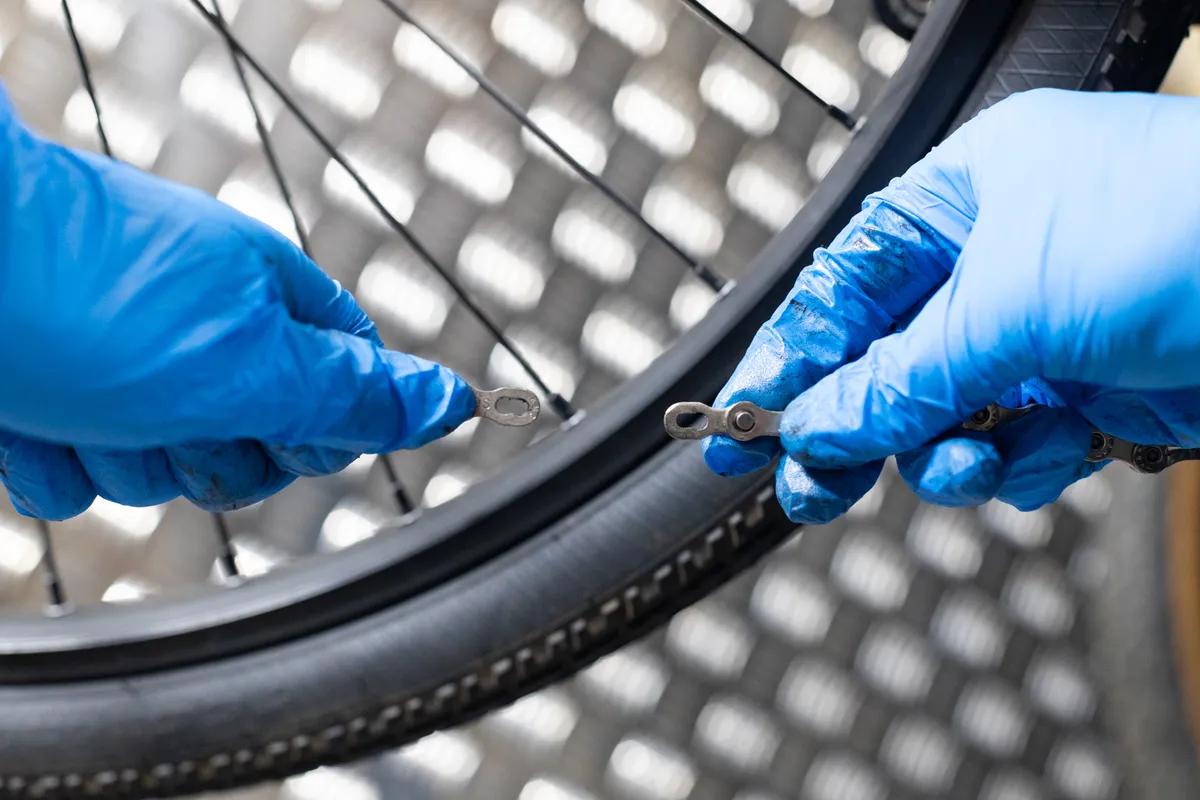
Install each end of the quick link at either end of the chain. If the quick link is designed to travel in one direction, make sure you are installing it the correct way round.

On Shimano, the arrow should point towards the rear derailleur when it is underneath the driveside chainstay. The best way to think about SRAM Eagle is its moon-shaped quick link should be ‘smiling’ when it’s underneath the driveside chainstay.
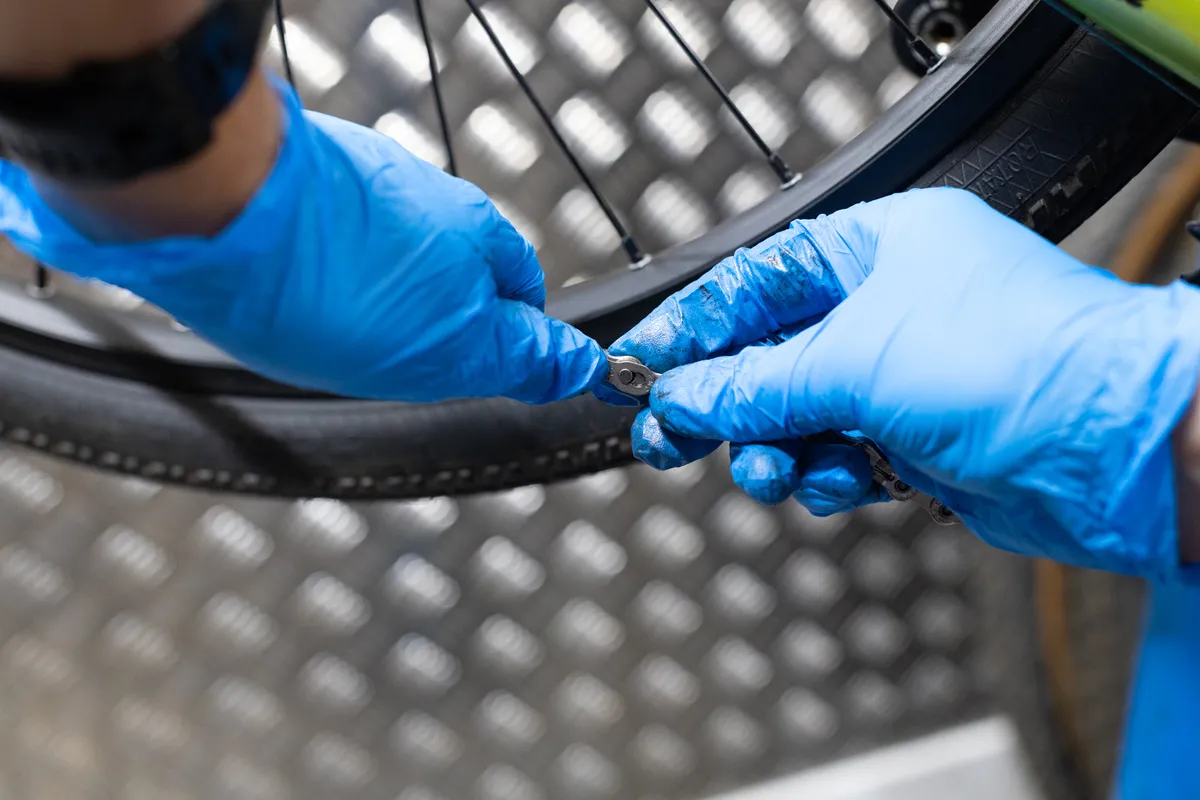
Place the pins of the quick link in line with the larger holes on the opposing link and push the two halves together so they are engaged.
Pull the link so the pins slide into the smaller holes and the quick link closes. If the two sides aren’t engaged properly, the quick link will likely break.
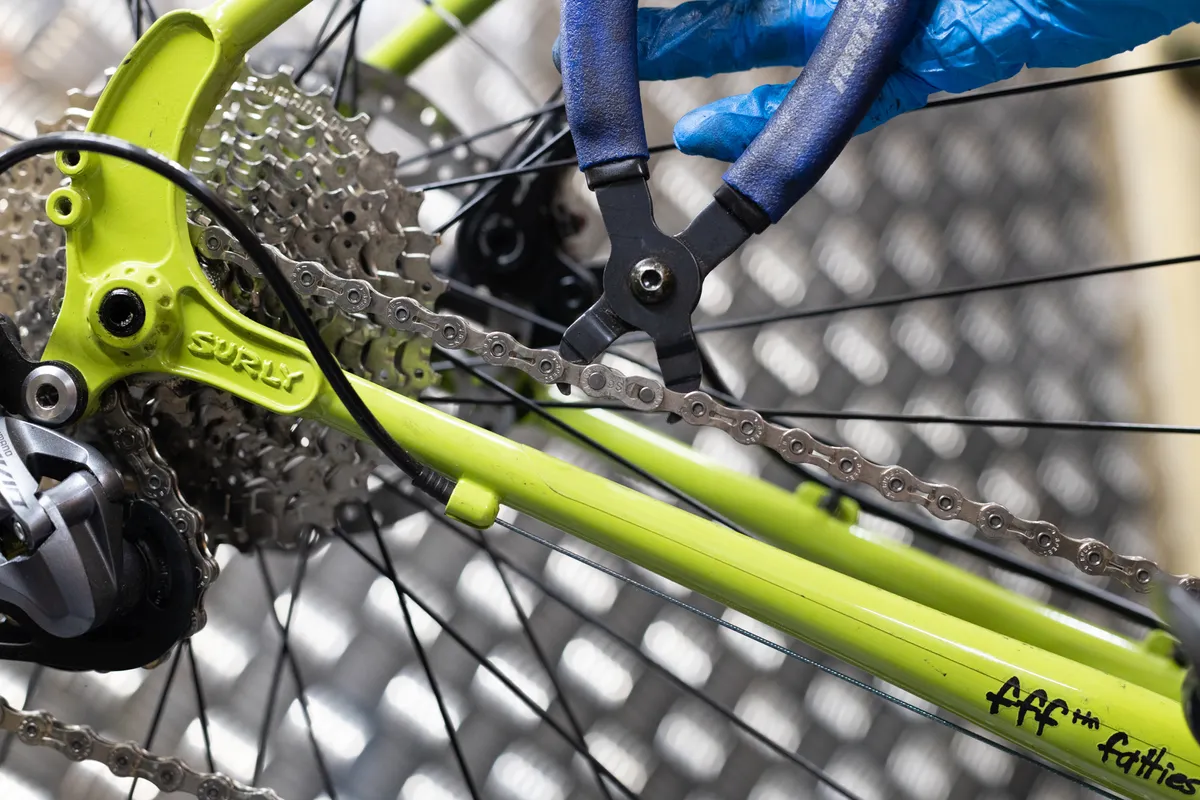
Some people like to use a pair of dedicated quick link installation pliers to fit a quick link.
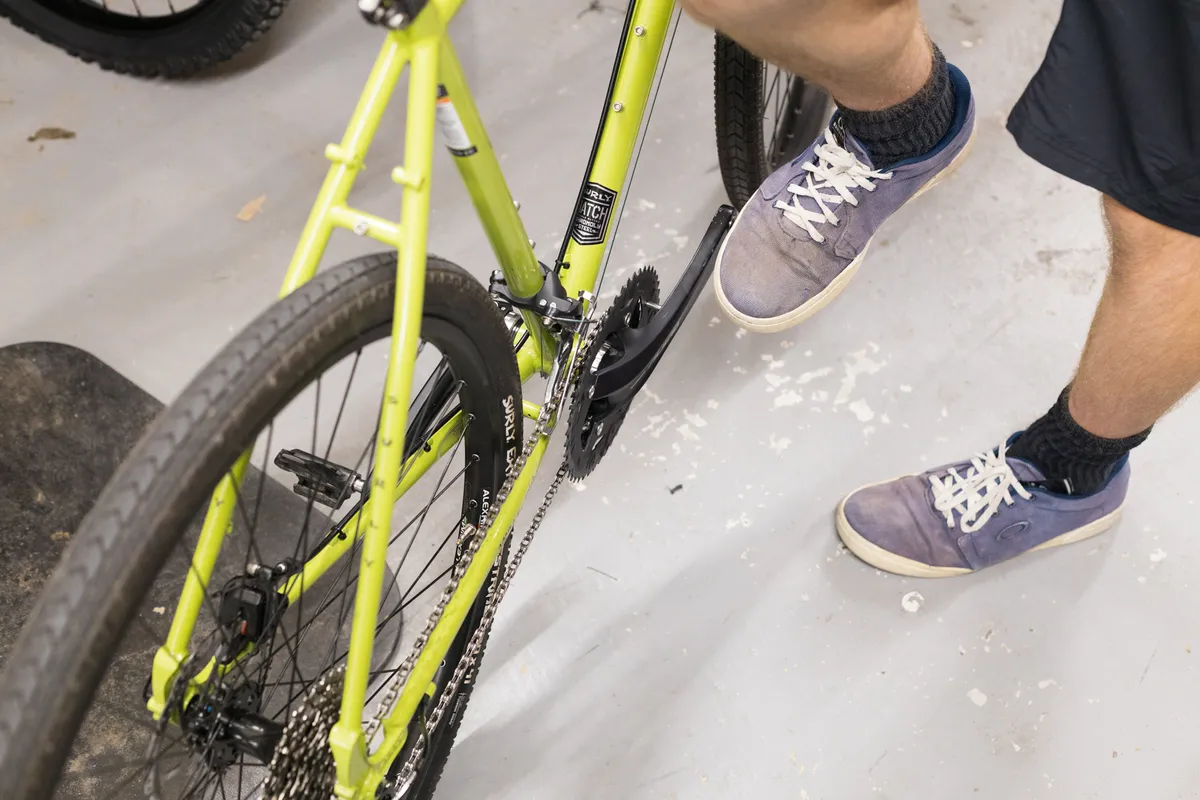
If you don’t have a pair, pedal the chain so it’s above the driveside chainstay. Pull the rear brake on and pedal downward. You should hear a loud click, signalling it’s seated in place. It’s worth a final visual check too.
Because a chain is under tension when fitted, it can be tricky to pull both ends of the chain together when installing a quick link.
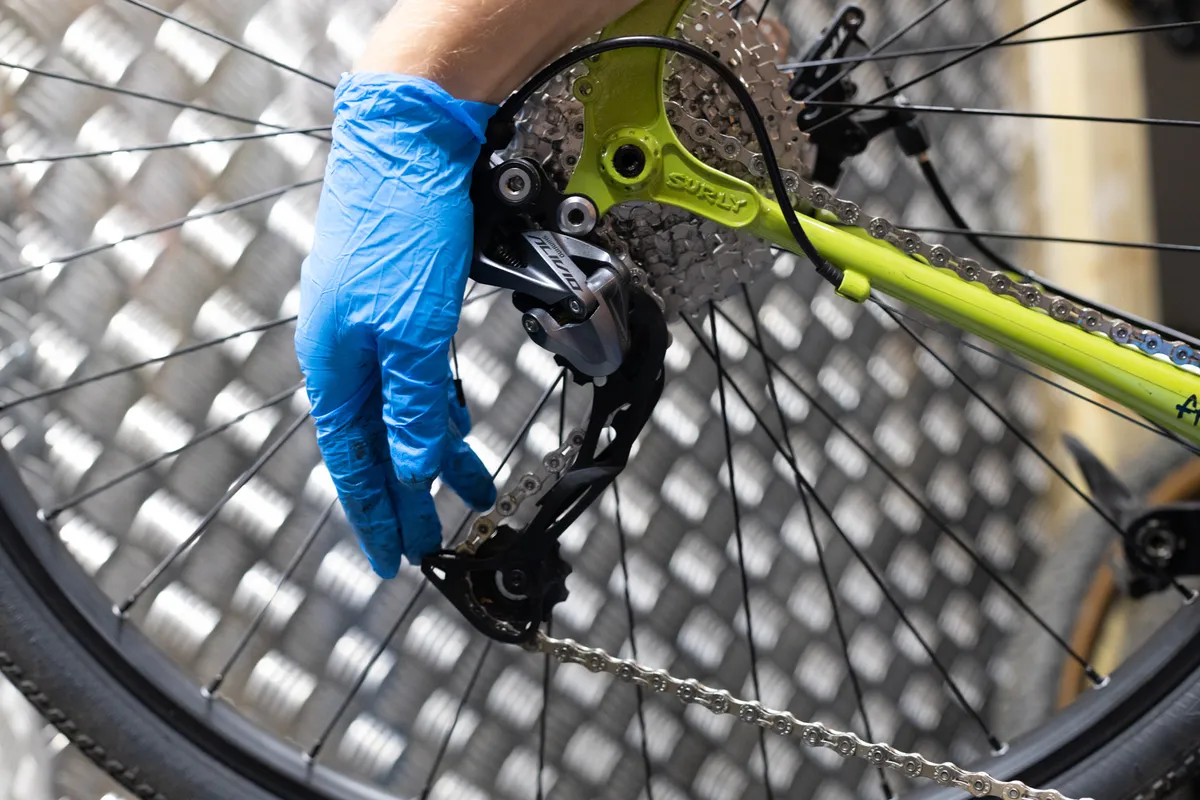
If you’re finding it difficult to get the two ends together, either get a friend to hold the rear derailleur cage forward to give you some more slack, or use a chain retention device or a bent spoke to hold both ends of the chain together. If your bike has a clutch rear derailleur, turn the clutch off.
If the quick link isn’t moving freely, it’s worth dropping some chain lubricant on it to free it up.
How to remove a quick link
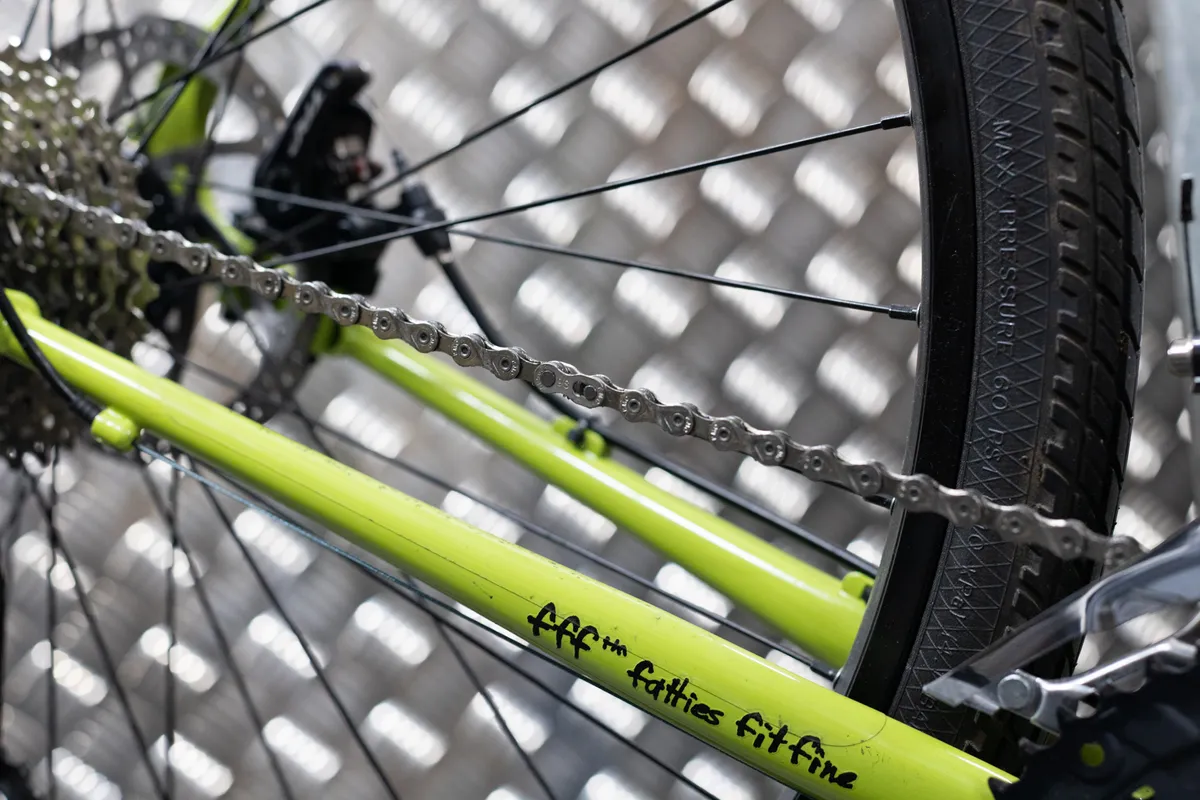
Removing a quick link is practically the same process as installing one, just in reverse.
It’s possible you will be able to remove 8- or 9-speed quick links by hand, simply squeezing the two plates together and sliding them apart. If the chain is unclean or the quick link is stiff, this can be a fiddly task.
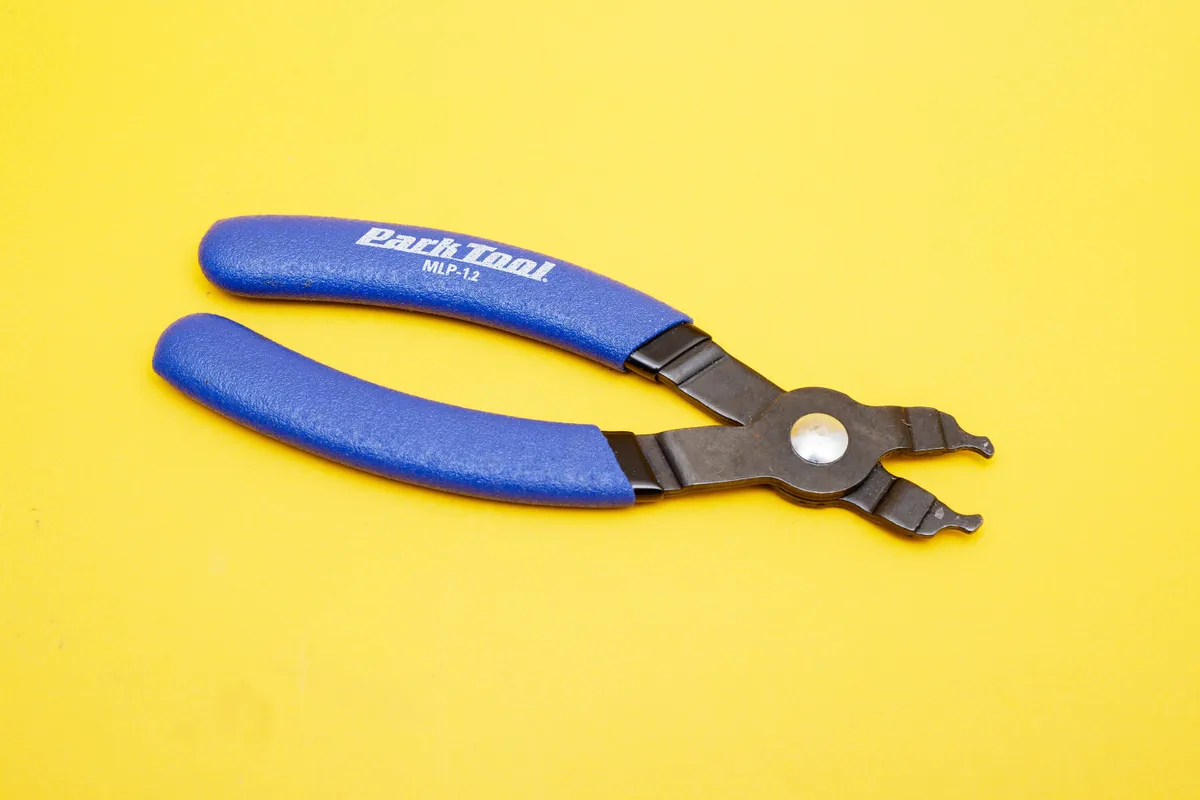
Quick links in 10-, 11- or 12-speed chains require much more force to undo, due to the tighter tolerances on these chains. This means you’ll need to use removal pliers. Many brands, such as KMC, Park Tool and Shimano, make these tools.
If you’re replacing the chain entirely and you don’t have removal pliers, you can always use a chain breaker anywhere on the chain.
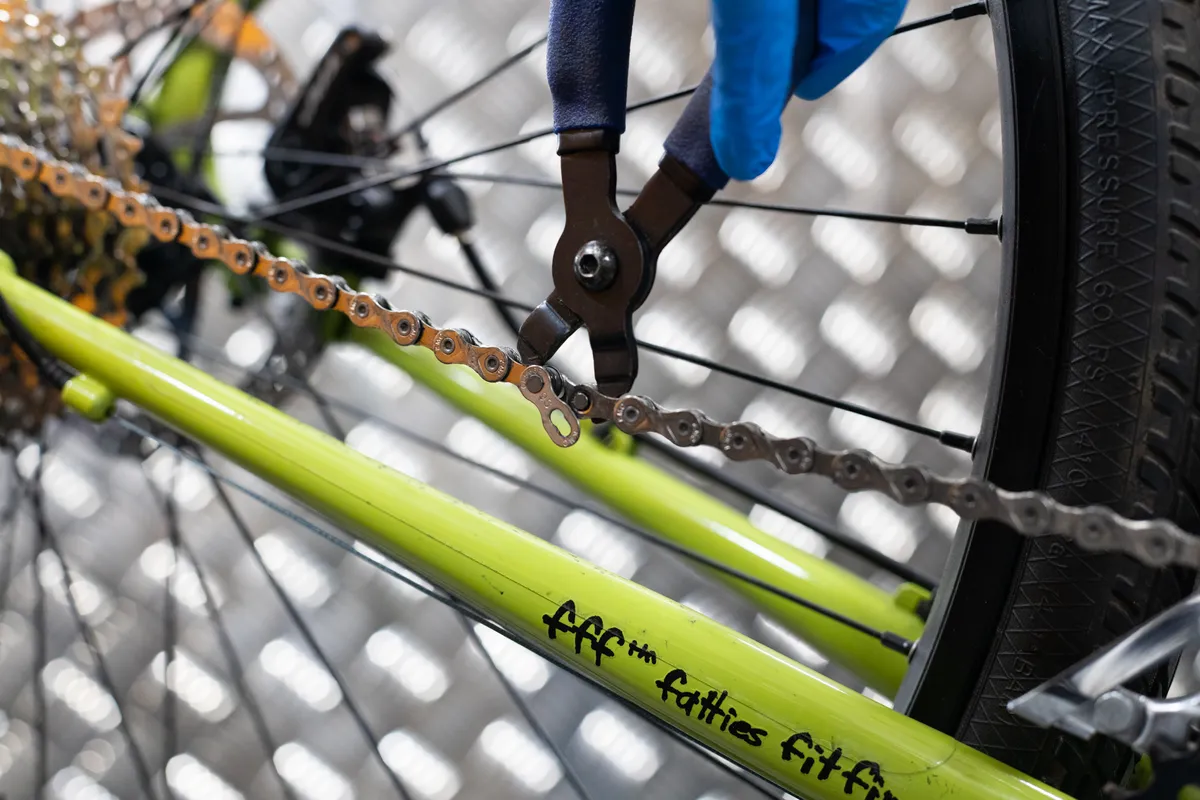
When using removal pliers, insert the tool on either side of the quick link’s pins. Squeeze the pliers and the link should come undone. This can sometimes require force, particularly on non-reusable quick-links.
Make sure to use a new quick link if the one you’ve removed is not reusable.
